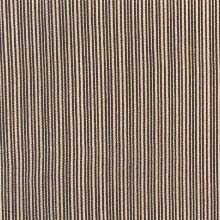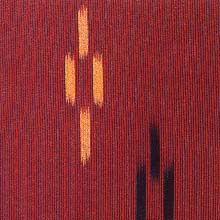Weave (p. 65 )
1. Produced in Kiryu City, Gunma Prefecture.
2. Characteristics: High quality fabrics woven with softened and dyed silk threads, regarded as elegant cloth having harmony in refinement and the latest fashion. Comfortable to skin and not sticky when worn, but absorbent and shrinkable. The word "Omeshi" is an honorific term meaning "wear", and it came from the 11th Tokugawa Shogunate, Ienari, who loved to wear "Chirimen"(crepe) produced here.
3. Uses: Clothing.
4. History: The history of fabrics in Kiryu is old: the technique is said to have been imported with the old Korean immigrants. A record shows that the fabric was delivered to the Imperial Court as tax in the early Nara Period(710-794). Kiryu was well known as quoted in the phrase "Nishijin in the West and Kiryu in the East." When Nishijin in Kyoto was enjoying a most flourishing production of fabrics, it was destroyed by a calamitous fire in 1720 and many weavers there moved to other districts. Two of them, came to Kiryu, bringing the raised looms and technique of design weaving, and produced "Shima Chirimen"(stripe crepe) which is the origin of "Omeshi Chirimen." The weaving industry was modernized in the Meiji Era with the introduction of machines and chemical dyes which brought about the production of embroidered crepe and loosely woven crepe. The production reached its height in the Meiji and Taisho Periods. Kiryu today is a center of fabric production, including not only for traditional kimonos but also fabrics for western clothes.




